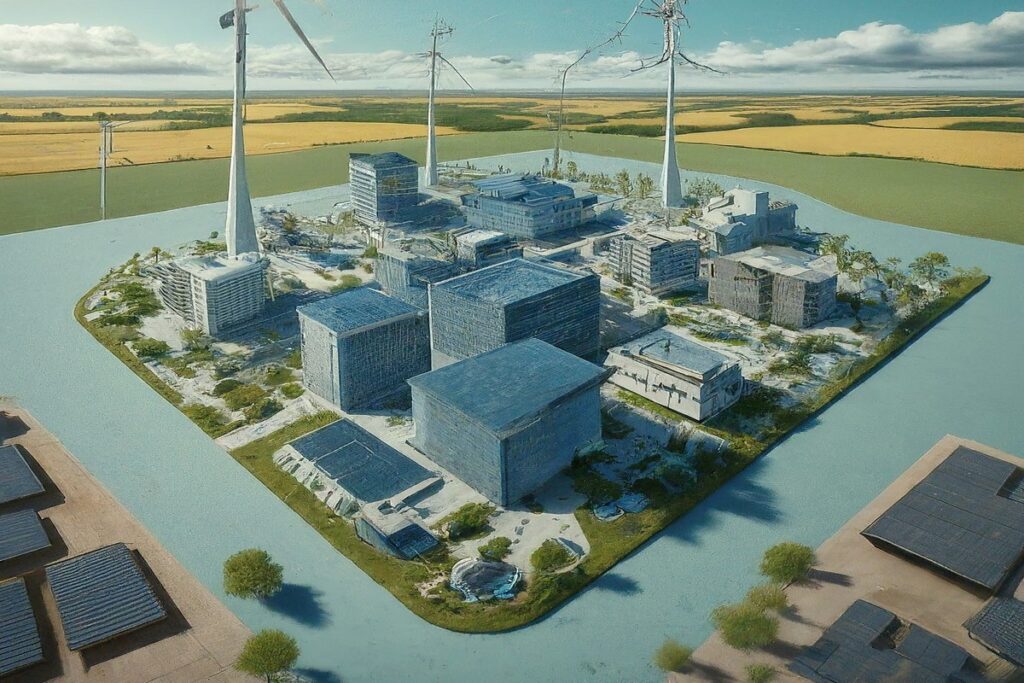Introduction : Urban Energy Solutions
Hey! Just imagine taking a stroll in the city characterized by fresh air, tree-lined streets, and where everything is just perfect. Sounds like a dream, right? But this is actually happening in cities all over the world. With more people moving to urban centers, the demand for clean, sustainable energy is increasing so fast. Let’s talk about how cities are doing better on energy matters and why it’s such a big deal.
Why do we need sustainable urban energy solutions?
Cities are full of life and human activity. More than half of the earth’s population lives in cities. This number keeps growing each day. With more people comes more energy use as well as more pollution. Traditional sources of energy such as coal and oil are not only getting exhausted but they also destroy the environment if used. Therefore, shifting to renewable energy sources does not only sound good; it must be done.
Why focus on cities’ Urban Energy Solutions?
The following are reasons why cities count:
- High Energy Use : Buildings, transportation, and factories consume huge amounts of energy in cities.
- Pollution : Increased numbers of people plus industries imply that there will be more pollution found within towns.
- Climate Change : Cities face significant risks from climate change which include heat waves and floods.
What makes a city sustainable via effective Urban Energy Solutions?
So what goes into making a city green or sustainable? Here’s the breakdown.
1. Renewable Energy Sources
Renewable energy is key for sustainable cities. Cities are using more solar, wind, and water power.
- Solar Power: Solar panels on rooftops and solar farms are becoming common. There are even solar-powered buses and streetlights!
- Wind Power: Wind turbines, both on land and offshore, are generating clean energy for cities.
- Hydropower: Some cities use nearby rivers to produce hydroelectric power, though this is more common in rural areas.
2. Energy Efficiency
Making buildings and infrastructure more energy-efficient is super important. This means using less energy to do the same things.
- Smart Grids: Smart grids help manage and distribute energy better, cutting down on waste.
- Green Buildings: Buildings designed to be energy-efficient use less power for heating, cooling, and lighting.
- LED Lighting: LED lights use less energy and last longer than regular bulbs, saving money and reducing waste.
3. Sustainable Transportation
Transportation is a huge energy user, but there are greener options.
- Electric Vehicles (EVs): More people are driving EVs, and cities are adding charging stations to support them.
- Public Transit: Improving buses, trains, and trams helps cut down the number of cars on the road.
- Biking and Walking: More bike lanes and pedestrian areas make it easier and safer to get around without a car.
4. Thoughtful Urban Planning
Good urban planning means designing cities with sustainability in mind.
- Mixed-Use Development: Combining homes, shops, and parks in one area cuts down on long commutes.
- Green Spaces: Parks and gardens not only look nice but also help clean the air and cool down the city.
- Compact Design: Designing cities to be compact means shorter distances to travel, which saves energy.
Cities Leading the Way
Let’s check out some cities that are really leading the way in sustainability.
Copenhagen, Denmark
Copenhagen aims to be carbon-neutral by 2025. Here’s how they’re doing it:
- Wind Power: Offshore wind farms provide a lot of the city’s electricity.
- Biking: Over 60% of residents commute by bike thanks to extensive bike lanes.
- District Heating: A system that captures and reuses waste heat from power plants and industries.
San Francisco, USA
San Francisco is another leader in urban sustainability:
- Renewable Energy: The city plans to use 100% renewable energy by 2030.
- Zero Waste: San Francisco aims for zero waste by reducing, reusing, and recycling as much as possible.
- Green Buildings: Strict building codes promote energy efficiency and sustainability.
Singapore
Singapore is known for its innovative approach to sustainability:
- Vertical Gardens: Buildings covered in greenery help reduce heat and improve air quality.
- Smart Technology: The city uses smart tech to manage energy, traffic, and waste.
- Water Management: Advanced systems for collecting and recycling water.
What’s Next for Urban Energy Solutions?
The move towards sustainable cities is gaining speed. Here are some trends to watch:
Smart Cities
Smart cities use technology to improve urban life, from traffic management to energy use. Smart grids, IoT devices, and data analytics make cities more efficient and sustainable.
Better Energy Storage
Improving how we store energy, like better batteries, helps ensure a steady supply of renewable energy even when the sun isn’t shining or the wind isn’t blowing.
Decentralized Energy
Generating energy closer to where it’s used reduces transmission losses and increases resilience. Microgrids and community energy projects are great examples.
Circular Economy
A circular economy reduces waste by reusing, repairing, and recycling. Cities adopting these principles can lower their environmental impact.
How You Can Help
Governments and planners aren’t the only ones who can make a difference. Businesses and individuals have a big role to play too.
Businesses
- Go Green: Implement energy-efficient practices and use renewable energy.
- Innovate: Develop new tech and solutions for sustainability.
- Collaborate: Work with local governments and other businesses to build sustainable communities.
Individuals
- Save Energy: Be mindful of energy use at home and work.
- Use Public Transit: Choose public transport, bike, or walk when possible.
- Get Involved: Support local sustainability initiatives and policies.
Conclusion
Sustainable cities aren’t just a nice idea—they’re essential for our future. By embracing renewable energy, improving efficiency, and planning thoughtfully, we can create cities that are healthier and more livable. Everyone has a role to play in making this vision a reality. Let’s work together to build the sustainable cities of tomorrow, where we can all thrive.

